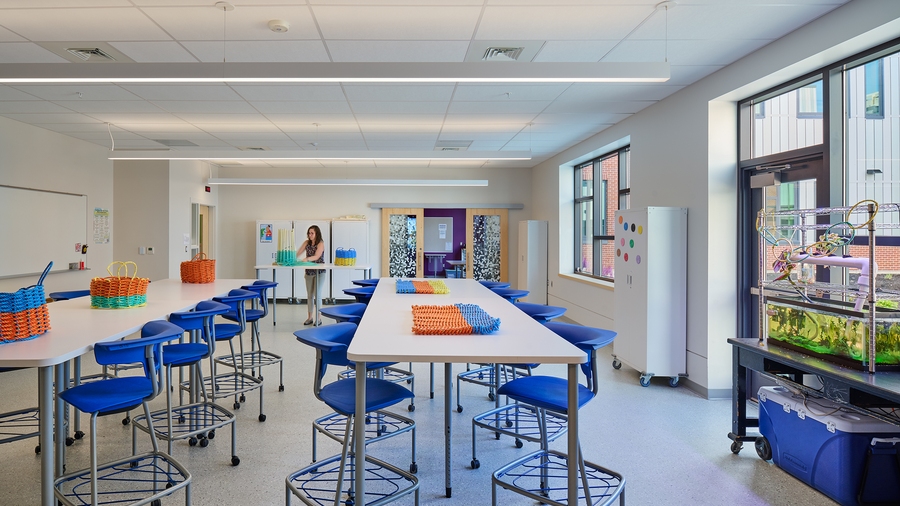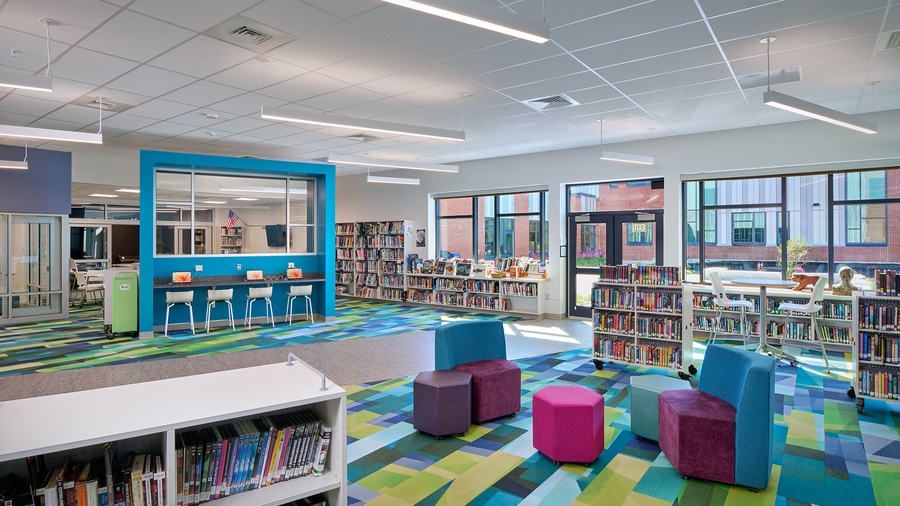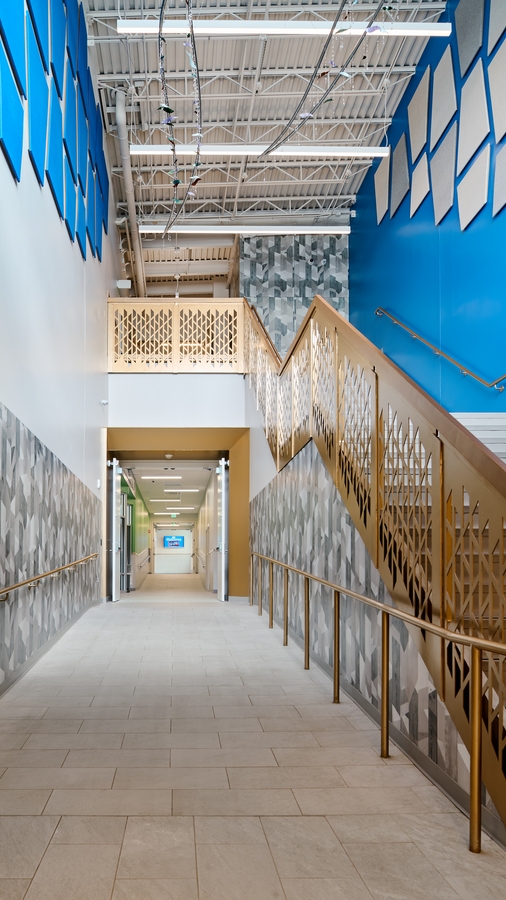Charles M. Sumner Learning Campus
The Charles M. Sumner Learning Campus is a combined middle and high school, serving more than 500 students in grades 6-12. Situated next to the school’s athletic fields, the building replaces the 1950s-era Sumner Memorial High School on Route 1 and features air-source heat pumps, energy recovery ventilation, and VRF units, allowing the new building to perform with an anticipated EUI of 32. The new school provides a state-of-the-art learning campus with shared 21st century learning environments, including a new learning commons, maker spaces, and materials labs.
RSU #24 had offered unique programming to their high school students, including a traditional metal and wood shop, innovation labs with emerging technology, and a Pathways program that supports students with non-traditional schedules. The new building expands upon this student-based programming and now allows middle level learners to participate. The design ensures maker spaces, shops, innovation labs, and the Pathways spaces are available and accessible to all students while balancing a sense of middle school identity for the younger students. Middle school academic spaces are supported with breakout spaces adjacent to classrooms to foster collaboration, independent learning skills, and multi-modal learning.
The courtyard design of the classroom wing allows for light-filled corridors and classrooms that face a wooded site, furthering a deep connection this community has to their natural landscape.
Project summary
New construction of 130,000 square feet.
Student body size of 550.
Sustainable features result in an EUI of 32.
Talk to an expert

Kathryn Cogan, LEED AP BD+C
Education Studio Leader
Kathy manages K-12 and higher education projects, including a series of $40 million to $60 million new construction school projects, guiding them from feasibility studies and early concepts to public referendum and through design and construction. These projects have complex stakeholder groups and often require oversight from multiple state agencies.



